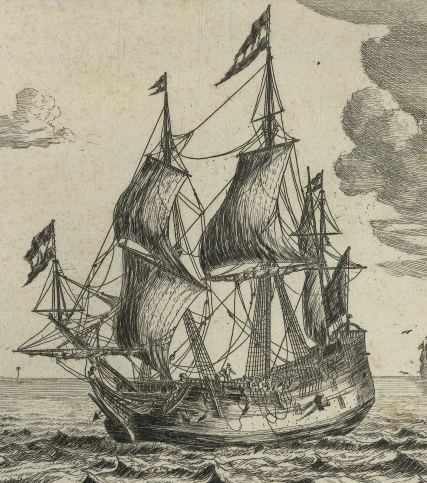
NY400 – The Economy of New Amsterdam
Learn about Cornelis Steenwijck and 27 Pearl Street:
Learn about Oloff Stevensen van Cortlandt and the Brewery:
Scripts
Don’t want to watch the videos? Read the scripts here!
Video 1:
The town of New Amsterdam was born as an economic hotspot. When Henry Hudson arrived in New York Bay in 1609, he found a land rich with furs, fish, and plants. From 1624, settlers employed by the West India Company traded European goods to the local people for beaver pelts to ship back to Europe. They soon transformed the bay into a commercial seaport embedded in a global Dutch trading empire.
By the late 1650s, New Amsterdam was a wealthy city that experienced a commercial boom. One of its most successful merchants was Cornelis Steenwijck. Born in Haarlem in the Dutch Republic, he arrived in New Amsterdam in 1651. Steenwijk lived in a house at present day Pearl Street and used the bottom floor of his home as a shop. He exported raw materials like timber and animal furs to Europe and imported duffel cloth, pipe stems, liquor, and gunpowder to sell in the colony. Part of his wealth also came from the expanding trade in enslaved Africans.
Steenwijck became a political leader, serving three terms as schepens and becoming burgomaster in 1664. When the city was taken by the English, he skillfully formed new partnerships with English merchants while continuing his relationships with the Dutch Republic. By the early 1670s, he was the second wealthiest man in New York. He served three terms as New York City’s mayor and died in early 1685.
Steenwijck’s life as a prominent entrepreneur and influential political leader made him an important transitional figure in early New York’s history, someone who preserved early Dutch traditions and practices, and carried them into the late 17th century and beyond.
Video 2:
In the bustling city of New Amsterdam, becoming a successful businessman was an option for many: the town was new and needed masters in every skill to do all the required work. This included brewing, one of the most essential as well as lucrative activities of a Dutch town.
Originally from Wijk bij Duurstede, Utrecht, Oloff had sailed to New Amsterdam in 1637 on the Haring as a soldier for the West India Company. Oloff worked as a tax collector until 1648, when he became a freeman. This allowed him to become a merchant and try his hand at the different sectors in town. Brewing beer is what he was most renowned for, setting up his brewery on the Brouwerstraat. He supplied beer to the many places where people gathered to have a drink. Oloff most likely did not do all the work himself, leaving it to the personnel while he managed the finances of the business.
Aside from brewing beer, he also made profit from shipping, manufacturing, and land ownership. These successful business endeavours together made Oloff Stevensen one of the wealthiest and most influential men of the colony. He was also chosen to be part of the council of Eight Men in 1645. The Eight Men were outraged by the losses the colony suffered during Kieft’s War and sent a remonstrance to the West India Company and the States General. As a result Director Kieft was replaced by Petrus Stuyvesant. Oloff would also be part of the council of Nine Men in 1649, which dealt with many of the same issues.
In 1655, Oloff was appointed as one of the two burgomasters, or mayor, of the town and would keep holding roles as civil servant for the next twenty years, a legacy that his descendants upheld. His sons also purchased large tracts of land in the expanding New York, most notably the Van Cortlandt Manors and the Van Cortlandt House, making Oloff the first in line in shaping the history of New York.


